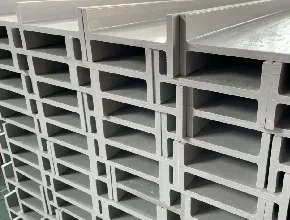loading...
- No. 9, Xingyuan South Street, Dongwaihuan Road, Zaoqiang County, Hengshui, Hebei, China
- admin@zjcomposites.com
- +86 15097380338
- Welcome to visit our website!
Current Trends in Fiberglass Rebar Pricing and Market Analysis
Understanding Fiberglass Rebar Prices A Comprehensive Overview
As construction materials evolve, the demand for innovative solutions has led to the rising popularity of fiberglass rebar. This composite material, made from glass fibers and resin, is renowned for its strength, durability, and corrosion resistance. Unlike traditional steel rebar, fiberglass rebar is lightweight and non-corrosive, making it an attractive option for a variety of construction applications. However, one of the most critical factors influencing the adoption of fiberglass rebar is its price. In this article, we will explore the factors affecting fiberglass rebar prices, its benefits, and how it compares to traditional rebar.
Factors Influencing Fiberglass Rebar Prices
1. Material Composition The primary determinant of fiberglass rebar prices is its material composition. The quality and type of glass fibers used significantly impact the cost. High-strength fibers may increase the price per unit. Additionally, the type of resin—such as vinyl ester or epoxy—used in the manufacturing process can also play a crucial role in determining the final price.
2. Production Processes Fiberglass rebar is produced through various methods, including pultrusion, which is a continuous process of stretching and drawing the material. This manufacturing method affects the overall cost, with more complex processes generally leading to higher prices. Production capacity and the scale of manufacturing also influence pricing; larger operations may benefit from economies of scale, thereby reducing costs.
3. Market Demand and Supply The demand for fiberglass rebar can vary based on construction trends, environmental considerations, and shifts in regulatory standards. When demand is high but supply remains constant, prices tend to rise. Conversely, when supply exceeds demand, prices usually fall. Economic conditions, including the overall health of the construction industry, also play a significant role in determining market prices.
4. Geographic Location Transportation costs can vary greatly depending on the distance between manufacturers and consumers. Regions with higher shipping costs may see increased fiberglass rebar prices. Additionally, local regulations and labor costs can influence manufacturing and delivery expenses, thereby affecting the prices charged to consumers.
5. Market Competition The presence of alternative products, such as steel rebar and other composite materials, can also affect fiberglass rebar pricing. If fiberglass rebar is competing directly with steel, the pricing strategy adopted by competitor brands can impact how much a consumer is willing to pay for fiberglass options.
fiberglass rebar price

Benefits of Using Fiberglass Rebar
Despite potentially higher upfront costs compared to traditional steel rebar, fiberglass rebar offers several benefits that can justify its price within specific applications
1. Corrosion Resistance Unlike steel, fiberglass rebar does not corrode when exposed to harsh environmental conditions. This resistance to corrosion can lead to longer lifespans for structures, reducing maintenance costs over time.
2. Lightweight Nature Fiberglass rebar is significantly lighter than its steel counterparts. This characteristic can result in lower shipping costs and easier handling during installation, which can help offset some of its initial price.
3. Non-Magnetic Properties This feature makes fiberglass rebar ideal for use in structures that require non-magnetic materials, such as in MRI facilities or other sensitive environments.
4. Sustainability As the construction industry shifts towards more sustainable practices, fiberglass rebar emerges as a greener alternative due to its longevity and lower environmental impact during production.
Conclusion
In conclusion, the price of fiberglass rebar is influenced by a variety of factors, including material composition, production processes, market demand, geographic location, and competition. While fiberglass rebar may come at a higher initial cost compared to traditional steel rebar, its numerous benefits, such as corrosion resistance, lightweight properties, non-magnetic features, and sustainability, often justify the investment. As the construction industry continues to evolve, understanding the dynamics of fiberglass rebar pricing will be essential for making informed decisions that balance cost with long-term performance and durability.
-
Why Choose a Galvanized Water Tank for Your Storage NeedsNewsMay.21,2025
-
The Strength and Durability of FRP GratingNewsMay.21,2025
-
The Importance of Water Treatment Systems for Clean and Safe WaterNewsMay.21,2025
-
The Advantages of FRP Rebar for Construction ProjectsNewsMay.21,2025
-
Say Goodbye to Hard Water with a Reliable Water SoftenerNewsMay.21,2025
-
Maximize Your Water Storage with a Sectional Water TankNewsMay.21,2025
-
The Power of Filter VesselsNewsMay.19,2025
